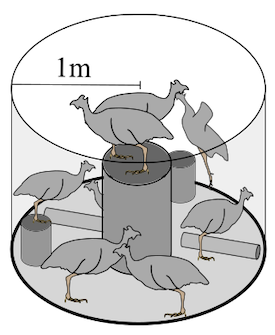New JAP paper
Our team, led by Suzanne Cox, found that eliminating high intensity movements during growth in a bird model (guinea fowl) only impairs maximal burst movements (jumping), not sub maximal running.
Suzanne Michelle Cox, Matthew Q. Salzano, Stephen J. Piazza, and Jonas Rubenson. (2019). Eliminating high-intensity activity during growth reduces mechanical power capacity but not sub-maximal metabolic cost in a bipedal animal model. Journal of Applied Physiology. In Press. https://doi.org/10.1152/japplphysiol.00679.2019
Decreases in activity levels in children worldwide are feared to have long-term health repercussions. Yet, due to the difficulty of performing controlled long-term studies in humans, we do not yet understand how decreases in childhood activity influence adult functional capacity. Here we tested (in an avian bipedal model) the influence of eliminating all high-intensity activity during growth on adult performance. We evaluated three alternative hypotheses: Elimination of high-intensity activity 1) does not influence adult function, 2) results in task-specific deficits in adulthood or 3) results in deficits that generalize across locomotor tasks. We found that animals restricted from jumping and sprinting during growth, as adults showed detriments in maximal jump performance in comparison to controls, but did not require more metabolic energy during steady-state running or standing. From this, we conclude that functional deficits from elimination of high-intensity exercise are task specific and do not generalize across all locomotor function.

